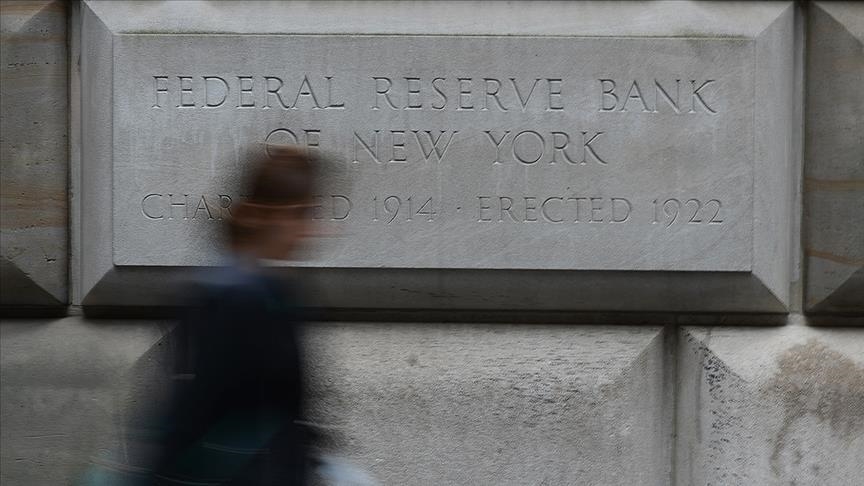NEW YORK
Inflation, which has regained momentum in the US for two months and exceeded expectations in August, caused concerns about how the Fed will shape monetary policy to return it to the 2% target.
The US inflation rate was at 0.6% in August, within expectations, and 3.7% annually, above market expectations.
An increase in gasoline prices because of a rise in oil prices was the most effective item in the monthly rise in inflation.
While the energy index increased 5.6% in August, it decreased 3.6% annually.
Gasoline prices under the energy item also increased 10.6% month-on-month, while decreasing 3.3% year-on-year.
US producer inflation also increased 1.6% year-on-year in August and 0.7% on a monthly basis, exceeding market expectations.
While the increase in inflation gave the Fed an extra reason to adopt a hawkish stance for the future, eyes turned to its interest rate decisions at its next meeting.
The markets are certain the Fed will keep the policy rate at 5.25-5.50%, the highest in 22 years, at its meeting this month, while economists noted the Fed’s emphasis that it will “act depending on the incoming data.”
Economists said the latest data kept the potential for another rate hike alive in the coming months, but the central bank’s move regarding monetary policy at the November meeting is not yet clear.
“I expect Fed to remain on hold”
Michael Pearce, chief US economist at Oxford Economics, told Anadolu that the acceleration in inflation in recent months was largely due to high energy costs, which pushed up core inflation along with airline prices.
Pearce said he expects inflation will not see last year’s peak levels and will remain in the 3% -4% range for the rest of the year.
Noting that the Fed is focused on reducing inflation in the medium term, Pearce said all signs suggest medium-term inflation pressures are still easing, with housing inflation down sharply, labor market conditions softening and wage growth returning to rates more consistent with the Fed’s 2% inflation target.
“If we do see a further rate hike this year, it will be because we get more data showing the economy is growing at an unsustainably fast pace, and not slowing as the Fed wants to see,” said Pearce, who added that he expects the Fed to emphasize it in its messages in a few months and to remain on hold.
Pearce said he expects a mild recession later this year as the lagged effect of monetary tightening continues.
At least one increase depending on inflation
Senior fellow at the American Enterprise Institute (AEI), Steven Kamin, said that the biggest factor in headline inflation is the increase in energy costs, citing that gasoline prices rose more than 10% in August.
He noted that oil prices remained well below last summer’s peak and demand slowed but Kamin did not expect inflation to see last year’s peak.
“The August data were, at best, a mixed bag, with increases in the monthly pace of both headline and core CPI inflation,” he said. Kamin expects at least one more increase if inflation remains at its current pace or rises.
“One more hike followed by declines by mid-next year should surprise markets all that much,” Kamin said. He said if inflation remains at current or higher levels, forcing further tightening, a recession is likely.
Final hike
James Knightley, ING International’s chief economist, said after positive core inflation data, an upside surprise was encountered in August, pointing out that rising energy costs also increased headline inflation.
Noting that the Fed will keep interest rates unchanged at this month’s meeting, Knightley said the latest data means authorities may make one more hike.
US inflation reached its highest since November 1981 with 9.1% in June 2022.
Annual inflation, which then declined gradually to 3% in June 2023, accelerated in July and August.
Targeting a 2% inflation rate, the Fed decided to raise interest rates for the first time since 2018 by 25 basis points at its meeting in March 2022 in the face of high inflation.
At its last meeting in July, the Fed raised its policy rate by 25 basis points in line with expectations, raising the policy rate to a 22-year high of between 5.25 – 5.50%.
The Fed has raised interest rates in 11 of 12 meetings since March 2022, raising the interest rate by a total of 525 points.
Fed Chair Jerome Powell said following the last FOMC meeting in July that it is possible to raise rates again at the September meeting if inflation and labor data require it.
Markets believe the Fed is likely to keep the policy rate unchanged with a 97% possibility at the September meeting, while there is a 58% chance it will keep interest rates constant at the November meeting.

